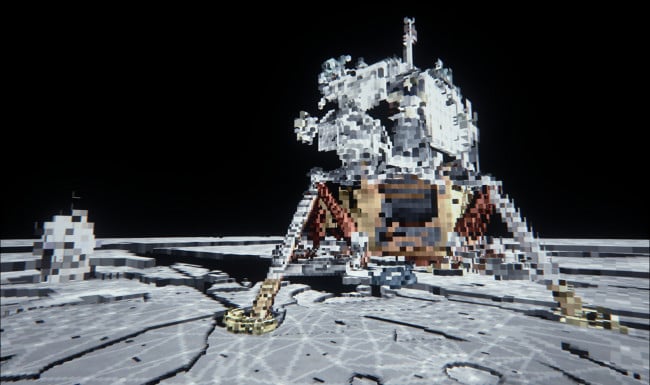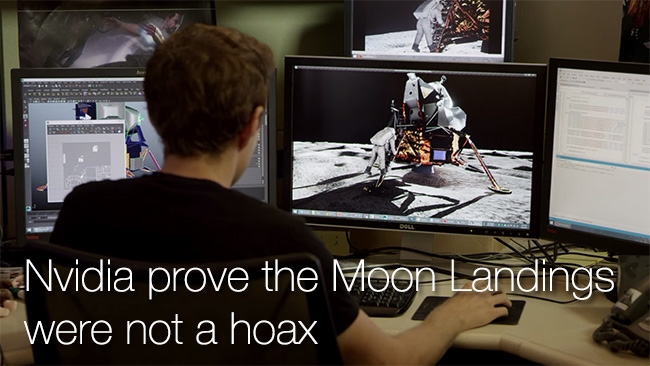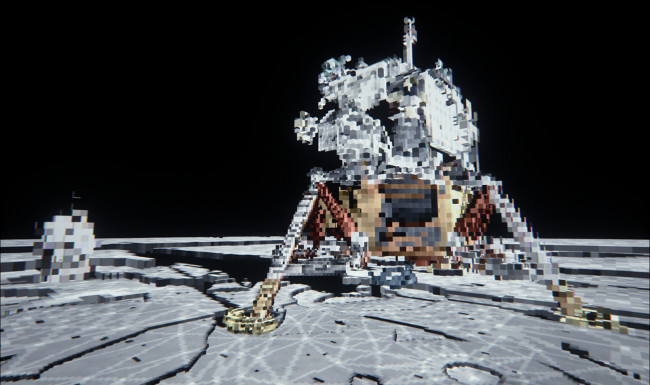
 Nvidia prove the moon landings were not a hoax
Nvidia prove the moon landings were not a hoax
45 years after the Apollo 11 astronauts landed on the moon, Nvidia has used its new "Maxwell" GPUs to prove that the images were not faked
Nvidia has just launched its latest family of GPUs, the GTX970 and GTX980 based on the new "Maxwell" processors, and it has chosen a very interesting way to showcase the real-time rendering capabilities of the cards.
Ever since the Moon Landings in 1969 there have been conspiracy theorists who have claimed that they never actually took place and that therefore the photographs and video must have been shot in a studio somewhere. One of the things they point to as proof of this are lighting inconsistencies in the photographs from the Lunar surface.
Nvidia's demo team has completely recreated the lunar landing scene in 3D and by using Real-Time Voxel Based Global Illumination, one of the new technologies in Maxwell, they have been able to show that the lighting in the photographs is exactly as it should be.
VXGI is about better representing the way light bounces from one object to another in real-time. To do that, VXGI breaks a scene's geometry into many thousands of tiny boxes called "voxels," or 3D pixels. Each side of each box is analysed to determine its opacity and its emittance, and therefore how it will affect the lighting of other objects in the scene.

The team at Nvidia did painstaking reasearch into the properties of the different objects in the scene, the lunar surface, the lander itself and even the space suits the astronauts were wearing.
In one classic shot, where Buzz Aldrin is seen climbing down the ladder from the Lunar Lander, it had been claimed that he should not have been so well illuminated as he was in the shadow of the Lander. When Nvidia computed the reflections from the surface and the lander he was not in full shadow, but the image still did not look quite right.
It was only when they looked at a video clip taken from the opposite direction they realised there was another light source that had not been taken into consideration: Neil Armstrong was holding the camera and his space suit was reflecting the sunlight back onto the scene. Once these calculations were added to the scene the resulting image was exposed almost exactly as the photograph had been.
You can read more about the project on Nvidia's blog or check out the video on the next page.
Tags: Technology



Comments